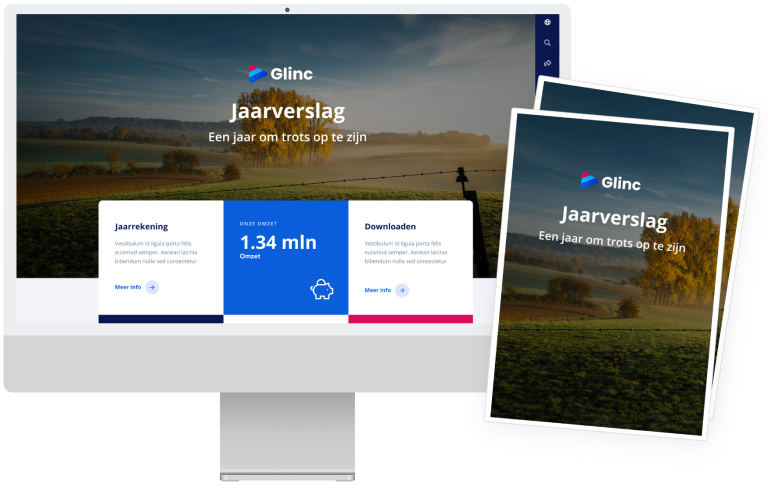Foreword by the Executive Board
Foreword by the Executive Board
Security of supply, now and in the future
On 24 February 2022, the European gas market entered a new era. The Russian invasion of Ukraine led to EU member states taking the historic step to wind down dependence on Russian natural gas as quickly as possible.
This decision disrupted the entire gas supply chain. Countries such as Qatar and the United States will produce more gas and build facilities to liquefy that gas so that it can be transported to Europe. Traders will have to enter into new, often long-term contracts for liquefied natural gas (LNG) with these countries. Russia’s days as the dominant gas supplier to Europe seem all but over.
When it comes to Gasunie, the phase-out of Russian gas means a reversal of international gas flows, which are now increasingly running from west to east and from south to north across Europe. This process is accelerating as European countries impose more sanctions on Russia and Russia retaliates by halting more and more gas supplies.
Over the past decades, Gasunie has expanded its gas network by building robust connections to neighbouring countries’ networks to enable gas from all points of the compass to flow to our region. The decision at the time to build a terminal for imported liquefied natural gas from overseas now enables us to better support European security of supply. The Netherlands and the northern part of Germany are a kind of roundabout for international gas transport and prices for the entire European market are set in our market area.
Full substitution of Russian gas is not something that can be arranged within a few months. A large part of the huge volumes that are imported from Russia will have to be replaced with LNG imported from overseas. It is Gasunie’s job to see to it that this LNG can be received, converted, and transported without any kind of limitations.
Our people are working extremely hard to make that happen. As early as by the end of this calendar year, we will have doubled the Netherlands’ LNG import capacity. Market parties are showing great interest. In Germany, which does not yet have any LNG terminals, we are in the process of preparing to connect new temporary third-party LNG terminals to our grid. We are also developing a permanent LNG terminal in northern Germany.
Gasunie Transport Services (GTS) has investigated the consequences for the Netherlands of a possible complete cessation of the supply of Russian gas to Europe for a year. The findings show that there will be no gas shortage in the Netherlands next winter, provided a number of conditions are met. Accordingly, GTS expects that mandatory shut-off of the gas supply for consumers in the coming winter will not be necessary.
GTS also makes a number of qualifications. In the event of a cold winter or setbacks in the supply of LNG, the actual situation may deviate significantly from the figures used for the calculations. Additional measures are required to fill the gas storage facilities for the following heating season (from October 2023) to the desired level of 90%.
The GTS analysis also shows that in the coming gas year (from October 2022), under the conditions outlined, the Netherlands will be able to transport a maximum of 35bcm of natural gas to Germany, which is the maximum that the domestic German gas transmission network can handle.
Green molecules
The current energy crisis is a wise lesson for the future. In tomorrow’s energy system, we must no longer depend on one country or region. The green molecules that will flow through our networks in the near future will come from multiple sources. In the future, green hydrogen will come from offshore wind farms, but also from various parts of the world by tanker ships. Through to 2030 and beyond, we want to invest in both transport and import infrastructure.
With all the focus on natural gas recently, it may seem as if we have lost sight a little of the energy transition. Nothing is further from the truth. A few weeks ago, we unveiled the roll-out plan for the national hydrogen network. And we made the decision to extend the WarmtelinQ heat grid to Leiden. We also announced our intention to invest in a hydrogen carrier import terminal in Rotterdam. We are also ready to come to a final investment decision for Porthos as soon as there is clarity from the Council of State on the building exemption in the context of the nitrogen issue.
An important question that is currently keeping us busy is whether the war that is holding our continent in its grip will end up either accelerating or delaying the energy transition. Natural gas prices have meanwhile risen fivefold compared to a year ago, while emission right prices have stopped rising. Will all of that jeopardise the transition’s financeability? Or will the war prove to be a catalyst that will wean us off fossil fuels quicker than we initially thought possible. As far as Gasunie is concerned, the second scenario is the one to go for.
Finally, a word of appreciation for our stakeholders and in particular our government, which has agreed to be a guarantor for contracts for our LNG capacity expansion. But above all, we would like to thank all our employees, who have to keep a lot of plates spinning in these challenging times to create enabling conditions for uninterrupted supply of energy now and enabling the energy transition for security of supply tomorrow and beyond. Value creation for now and in the future.


